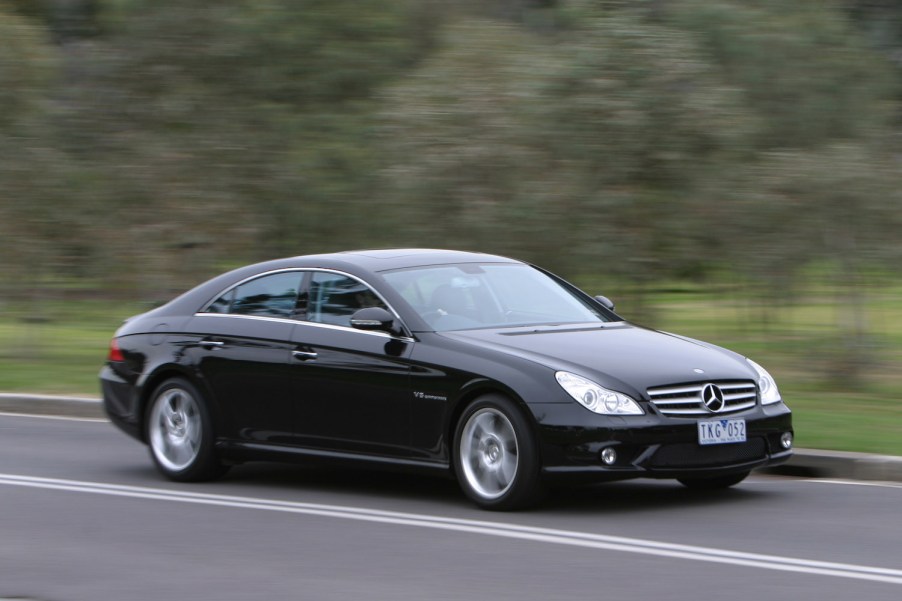
Best European Muscle Cars From Each Decade
Contrary to popular belief, the U.S. doesn’t have the market cornered on muscle cars. European car makers released plenty of coupes with big engines, though granted not as big as some American-bred cars, but big for the platform. Muscle cars are defined as mid-size performance cars with oversized engines. Quintessential U.S. muscle cars include the Pontiac GTO and the Dodge Charger. Older muscle cars are typically rear-wheel-drive coupes, and strut around the streets with particular no-nonsense styling. Here are some of the best European muscle cars to come out of each decade, from the 1960s to today.
1968 Iso Grifo: The German-American from Italy

Perhaps it’s appropriate the first car on this list is the Iso Grifo. It used Chevrolet and Ford V8s throughout its short 9-year tenure, mated to a BorgWarner 4-speed manual transmission at first, but then to a 5-speed from a company called ZF, a German car parts maker. It’s the perfect amalgamation of sports car, using Italian design, American muscle V8, and German engineering. In 1968 the Iso Grifo got a 7.0-liter, Chevrolet 427 big-block V8 pushing 435 horsepower, in a car that weighed 3,550 pounds at its heaviest.
1971 De Tomaso Mangusta: Father of the Pantera

Italian automaker De Tomaso used Ford engines in its Mangusta in 1971. They were 4.9-liter V8s, outputting 306 horsepower in Europe spec, mated to the same transmission as in the Iso Grifo. The Mangusta helped pave the way for the iconic De Tomaso Pantera, which used slightly bigger Ford V8s outputting 345 horsepower. The Mangusta’s engine was mid-mounted, and the car weighed only 2,866 pounds. It was a relatively light coupe with a Mustang engine, making it a European muscle car.
1986 Aston Martin V8 Volante: a wolf in gen 3 Mustang clothing

The same 5-speed makes yet another appearance in the 1986 Aston Martin V8 Volante. This car looked an awful lot like the 1974-1978 Mustang, but did not use a Ford V8. This used a 5.3-liter V8, producing 432 horsepower and was apparently as fast as a Ferrari Daytona. Its exterior was aggressively elegant, with big fog lights occupying both ends of the grille, alongside concave headlights deep inside sweeping fenders with big curves.
1996 BMW 850CSi: a massive German V12

Big and heavy, the BMW 850CSi didn’t feel as fast as a modern-day Honda Civic, but it definitely was cool, just like any European muscle car. It used s 5.6-liter V12 with 375 horsepower, and its engine bay was filled to the brim with two inline-sixes bolted together. It even had two intakes, and two batteries. This car still had a manual, though it used a Getrag 6-speed. It wasn’t necessarily fast, but the engine made a fantastic noise and the inside was snug and comfortable.
2006 Mercedes-Benz CLS55 AMG: forced induction wins

For one year only, Mercedes-Benz made one of the most ultimate driving experiences. The CLS55 AMG used a 5.5-liter supercharged V8, as what was used in the E55 AMG at the time. It feels more like a muscle car than anything else, thanks to the 516 lb-ft of torque at the ready. The car guns off the line with ease despite its 4,327-pound curb weight, without sports-car handling and precision. Almost the unofficial definition of a European muscle car, even if it does have four doors.
2017 Aston Martin V12 Vantage: proper modern European muscle

The Aston Martin V12 Vantage is the quintessential modern day European muscle car. It’s the smallest Aston, with the biggest engine stuffed under the hood. Its 5.9-liter V12 pumps out 568 horsepower and it’s all motor, so there’s no sacrificing throttle response. It even comes with a 7-speed manual transmission. All this helps it be one of the fastest Aston Martins ever made.
At this point muscle cars have so many definitions they can fit into pretty much any criteria. The aspects that are tried and true, big V8s in a mid-size car, hold steadfast, but the muscle car has evolved beyond any country’s borders. Just about every manufacturer has its own muscle car, it just takes some perspective to see it.


